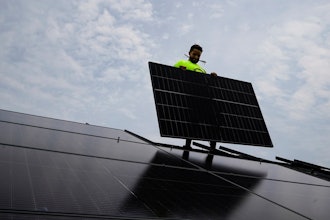TOKYO (AP) -- The head of the International Atomic Energy Agency said Monday that Japan's tsunami-hit nuclear plant is steadily making progress to contain damage from the crisis.
IAEA Director General Yukiya Amano said he is optimistic that workers at the Fukushima Dai-ichi nuclear plant could bring the radiation leaking reactors under control by early next year as planned.
"I observed the sites directly and I believe efforts to contain the damage are steadily making progress," Amano told reporters. "So many workers are tackling the problems enthusiastically. I think the outlook of resolving the crisis is bright."
Amano's visit to the plant Monday was his first since the crisis following the March 11 earthquake and tsunami that destroyed power and cooling systems. The accident caused the reactor cores to mostly melt down and leak massive amount of radiation into the environment.
Amano donned protective coveralls and a mask for the tour of the plant where he inspected the extent of damage to the reactor buildings and the water treatment system that recycles contaminated water as coolant. Escorted and briefed about the latest updates by plant chief Masao Yoshida, the IAEA director also briefly stopped at the plant's crisis management headquarters to talk to workers.
Japanese government officials and plant operator Tokyo Electric Power Co. said last week that the reactors have somewhat stabilized in the first four months and they plan to bring them to a cold shutdown within six months as initially planned.
A reactor reaches cold shutdown when the temperature at the bottom of the reactor pressure vessel falls below 100 degrees Celsius (212 Fahrenheit). That would mean water used as a coolant no longer boils off into steam and the amount of radiation released could be minimized.
Before he left Vienna on Sunday, Amano said in a statement that the agency also thinks TEPCO's plant to achieve cold shutdown by early next year is possible.
Amano is also expected to meet with Prime Minister Naoto Kan and other top officials to discuss the crisis, as well as ways to improve nuclear safety in Japan and reduce radioactive contamination in the Fukushima area. He is also set to attend an annual United Nations nuclear disarmament meeting in Matsumoto, central Japan, later this week.
Also Monday, Japanese lawmakers approved nearly 2 trillion yen ($25.5 billion) in extra funds to pay for reconstruction from the disasters.
About half of the newly approved budget will go toward temporary housing, health checks and other support projects for residents affected by the nuclear crisis.
Some 80,000 residents had to evacuate their homes due to radiation threats from the Fukushima Dai-ichi nuclear power plant. The quake and tsunami also left 23,000 others dead or missing across wide swaths of Japan's northeast coastline.
Japan in May approved a 4 billion yen supplementary budget for quake and tsunami reconstruction.






















